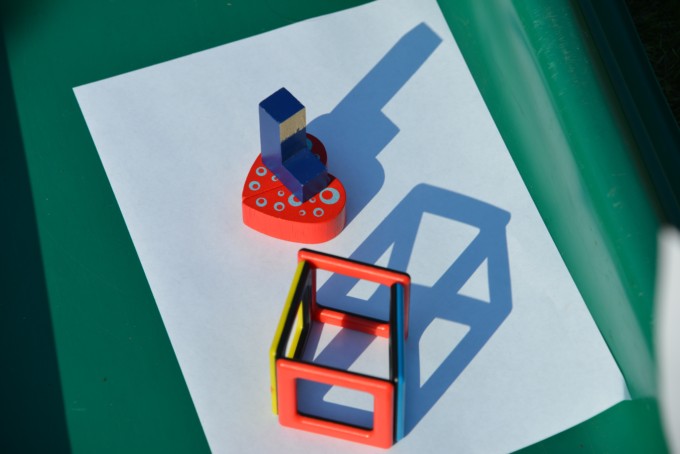my shadow is purple: Understanding the Color of Shadows and What It Means

my shadow is purple why your shadow looks different sometimes? It can be exciting to think about, especially when you notice something strange. “My shadow is purple” might sound like an odd thing to say, but there could be a reason for it. Shadows are not just black or gray—they can change color depending on the light and surroundings!
When you say, “My shadow is purple,” it might be because of a fun combination of light or objects around you. Shadows are formed when something blocks light. This blocking creates a shadow that can look different, and sometimes the colors around you make the shadow appear purple. Let’s take a look at why this happens and explore the fascinating world of shadows together.
Why Does My Shadow Look Purple? Uncovering the Mystery of Shadow Colors
When you look at your shadow, you might notice that it sometimes appears in colors like purple, blue, or even pink. Shadows are usually gray or black, so why would your shadow be purple? The answer lies in the light around you. Light is made up of many colors, and when certain types of light mix together, they can make your shadow look purple.
For example, if you’re outside during sunset, the sky might be filled with purple and orange hues. This special light can make your shadow take on a purple tone. Also, if you’re near a bright light, like a street lamp or colorful lights, the light bouncing off nearby objects can change the color of your shadow. So, when you say, “My shadow is purple,” it might just be the light around you making that happen!
Shadows are a natural part of the way light interacts with objects, but their color can change depending on many things. It’s a fun and fascinating way to understand how light works. The color of your shadow isn’t always fixed, and purple can be one of the many beautiful changes.
My Shadow is Purple: How Light and Objects Can Change the Color
Your shadow’s color is not only influenced by the time of day but also by the type of light and objects around you. Light doesn’t just shine in one color—it is made up of different colors. When light hits an object, it can scatter, bounce, or change direction. If there’s purple or blue light in the area, your shadow may take on a purple tone.
- Different light sources like sunlight, street lights, and neon signs can create different colors.
- Reflective surfaces can also affect how light is spread. For example, if there’s purple or blue light nearby, your shadow may appear purple as well.
- The angle of the light is another factor. If the light is low, like during the evening, it can create longer shadows that might also show different colors.
These factors combine in different ways to give your shadow a purple appearance. It’s all part of the magic of light!
The Science Behind Shadows: Why Shadows Can Look Purple Sometimes

Shadows are formed when light is blocked by an object. The color of a shadow depends on the light that is cast upon it. If you are in an area with different colored lights, like a city at night, your shadow might take on some of those colors. One of the most interesting colors is purple. This can happen if there is a combination of blue and red lights in your environment.
- Purple light mixing: Red and blue lights together can create purple. If your surroundings have this mix of colors, your shadow can look purple.
- Surrounding colors: Nearby colors, like a purple wall or colorful signs, can reflect light and affect your shadow’s color.
When these factors come together, you might notice something amazing—your shadow turning purple! It’s a great reminder that light and shadows can change in many exciting ways.
Purple Shadows and What They Mean: A Fun Guide to Shadow Colors
If you notice that your shadow is purple, it doesn’t always mean something strange is happening. It’s simply the effect of light. Colors around you can reflect on the shadow, changing its appearance. Purple shadows are just one of the many possibilities!
Sometimes, you might see purple shadows in special conditions, like during a sunset, where the sky is full of different colors. Or in places like amusement parks with colorful lights. Don’t worry if your shadow looks different from the usual gray or black color. It’s all about how light mixes and interacts with objects.
So, when you see purple in your shadow, just know it’s part of how light works. It’s not a magic trick, but it’s a fun way to see the world of shadows!
The Role of Light in Changing Shadow Colors: Why My Shadow is Purple
Light plays a big role in how shadows appear. When light hits an object, it creates a shadow on the surface. Depending on where the light comes from and what color it is, your shadow can look different. Sometimes, the color purple can show up in your shadow due to special lighting.
- Light sources like neon signs or colored lamps can affect the shadow.
- Time of day: During the evening or sunset, purple hues in the sky can add color to your shadow.
- Nearby reflective surfaces: A nearby purple object can reflect light and make the shadow look purple.
Understanding how light and colors work together helps us appreciate the beauty of shadows, even when they look purple.
How to Create Your Own Purple Shadow: Fun Experiments to Try

Want to try creating a purple shadow yourself? It’s easy! You can play with different light sources and see how they change the color of your shadow. Here are a few ideas to get started:
- Use colored light bulbs: If you have a colored light bulb, like purple or blue, turn it on and watch how the shadow changes.
- Find reflective surfaces: Try standing near a colorful object, like a purple wall, and see if your shadow looks purple.
- Experiment with angles: Move the light or yourself around and see how the shadow changes color.
These fun experiments will help you discover more about how light and color work with shadows.
Conclusion
In conclusion, seeing a purple shadow can be really cool and is just another way light and color work together. It happens because light can mix in different ways, and sometimes, that results in your shadow looking purple. Whether it’s from the setting sun, colored lights, or objects around you, it’s all part of how shadows change. The next time you see a purple shadow, you’ll know exactly why it happens!
Understanding shadows and their colors can be fun and exciting. It’s not just about seeing black or gray shadows anymore, but discovering how light can make them look in different colors. So, if your shadow turns purple, enjoy it! It’s a beautiful reminder of the magic of light around us.
FAQS
Q: Why is my shadow purple
A: Your shadow can appear purple when there are colors in the light around you, like purple or blue light. This can happen at sunset or near colored lights, making the shadow take on a purple hue.
Q: Is it normal for my shadow to look purple
A: Yes, it’s normal! Shadows can change color depending on the type of light and objects nearby. Purple shadows happen when light reflects or mixes in a certain way.
Q: Can different lights cause purple shadows
A: Absolutely! Different light sources, like street lights or neon signs, can give your shadow a purple color. The light’s color affects how the shadow looks.
Q: Does the time of day affect the color of my shadow
A: Yes! During the evening, when the sky is filled with warm colors, shadows can appear in shades of purple, pink, or blue. It’s the mix of colors in the sky.
Q: How can I make a purple shadow
A: You can create a purple shadow by using colored lights, like purple or blue bulbs, or by standing near something purple. The light and colors around you affect the shadow’s appearance.
Read more:phuh




